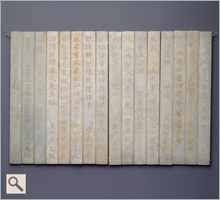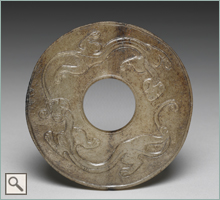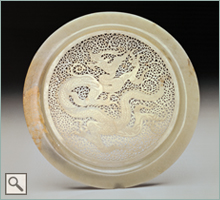The momentum of development for Chinese jades slowed down for a while during the consecutive turns of regimes from the Wei to Jin and then to the Southern and Northern Dynasties, whereas contemporarily in Central Asia the craft of jade and stone enjoyed a relatively active growth and continued into the era of Sui and Tang dynasties. These foreign, exotic works, coming into China either as tributary gifts or merchandise, injected fresh blood into the aged Chinese jade. Subsequently, ethnic Han people confronted and interacted closely with Khitans, Jurchens, and Mongols. The long-term contact, impact, and influence ranged over eight hundred years spanning from the Sui, Tang, and Five Dynasties ultimately to the Song, Liao, Jin, and Yuan dynasties. Out of these drastic changes and exchanges was born a significant new life of Chinese jades. The regenerated jade culture grew, expanded, and flourished, embracing ever more colorful contents and aspects, just like fully-nourished buds in rich blossoms.
The Blossoms of Jade section consists of four themes. First, lifelike realism, the most prevalent changes and characteristics of the time, as exhibited in the increasing adoption of natural elements such as flora, fauna, and human figures for aesthetic expressions. Next, the inherited culture of jade which as a medium between deities and humans symbolized the orthodoxy of Dao the Way and governance, as exemplified by the Jade Album of slips inscribed with the ritual shan prayer to Land Deity by Emperor Zhenzong of Song dynasty. Third, Song archaism which followed on the very Dao orthodoxy and resulted in controversial imitations and fakes greatly impacting subsequent Ming and Qing jades. Though few relevant items can be properly dated the cultural significance of the issue is too important to ignore. Last but not least, jade works of nomadic peoples, vivacious and free-spirited, at times even sumptuous, giving us new perspectives into their cultures and life styles.
Realism in Admiration for Nature
Jade Album of Slips symbolic of Orthodoxy
 Jade Album of slips inscribed with
Jade Album of slips inscribed withthe ritual shan prayer to Land Deity
(with sample plaques composing the jade
case that held the slips)
Zhenzong reign
Song dynasty
1008 C.E.
Per slip L. 29.5~29.8 cm W. 2 cm
Jades in Antiquarian Style Modeled on Ancient Times
Cultural Rivalry and Fusion







